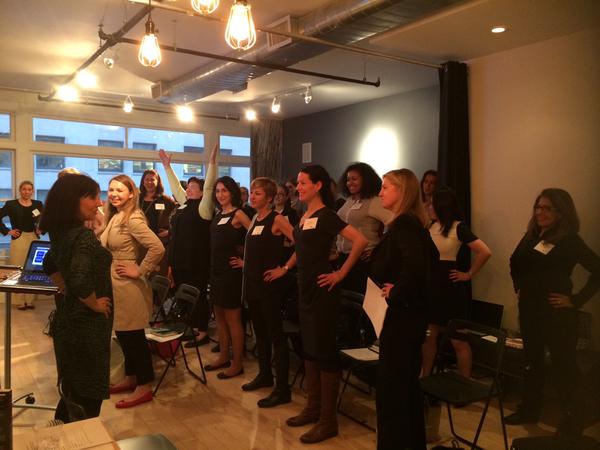 My colleague TJ Walker challenged the validity of Harvard professor, Amy Cuddy's power pose. Amy Cuddy has one of the most popular youtube videos on body language. She advises people to adopt the Wonder Woman pose (hands on hips) to feel powerful when speaking in public. In TJ's twitter post today, he disputes this claim and calls it a fraud.
Here's my opinion. The power pose was recommended to assuage public speaking fear. It's based on neuroscience research and when this pose is held for 2 minutes, there is an increase in testosterone. Higher levels of the hormone, testosterone, are found in those who are risk takers.
My colleague TJ Walker challenged the validity of Harvard professor, Amy Cuddy's power pose. Amy Cuddy has one of the most popular youtube videos on body language. She advises people to adopt the Wonder Woman pose (hands on hips) to feel powerful when speaking in public. In TJ's twitter post today, he disputes this claim and calls it a fraud.
Here's my opinion. The power pose was recommended to assuage public speaking fear. It's based on neuroscience research and when this pose is held for 2 minutes, there is an increase in testosterone. Higher levels of the hormone, testosterone, are found in those who are risk takers.
What was novel was that there was Harvard research backing up her claims. Do I think she's a fraud? No. Unless the research is flawed, it's helpful to have a technique to increase confidence. And there is a body language of confidence. The mind-body connection is widely accepted.
However, as an executive speech coach who works with women leaders and male executives, I don't claim that this one pose is a panacea for public speaking fear, nor does it make you a knockout presenter. TJ makes several good points. Amy Cuddy had a compelling story, a strong structure to her speech, and good visuals. I always tell my clients that great delivery sits on great structure. Your presentation delivery is only as good as your organization. Public speaking success is 90% preparation and 10% delivery.
A client recently hired me for four hours to work on a 15 minute high stakes presentation. That did not include the time she spent with the graphic designer.
So to feel confident, the first step is preparation, planning, and a good, strong message. Presenters need to master their minds as well as their skill set. Does it help to use the power pose? Probably. I teach it to audiences. It makes them feel powerful. But it's not the whole story. There are other physical skills I give them. But I do believe that the mind affects the body and the body affects the mind.
So as long as presenters prepare and practice their message, why not strike a pose and feel powerful?
https://www.youtube.com/watch?v=Ks-_Mh1QhMc


 How is
How is 






 Make this your best year. Start by polishing your presentation and communication skills. Resolve to follow these eleven speaking principles to speak with greater impact.
Make this your best year. Start by polishing your presentation and communication skills. Resolve to follow these eleven speaking principles to speak with greater impact.
